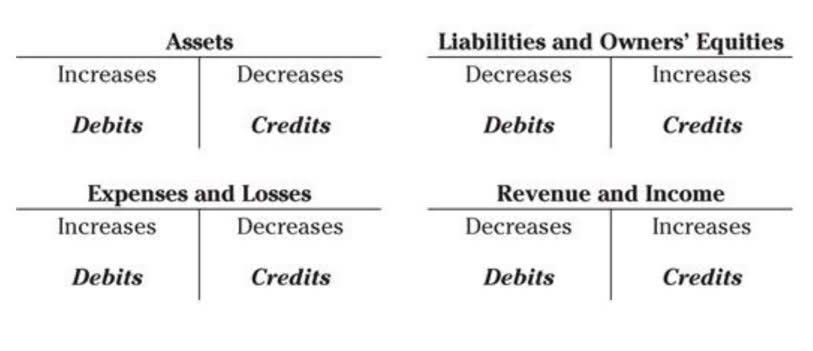
Therefore, the future value of your annuity due with $1,000 annual payments at a 5 percent interest rate for five years would be about $5,801.91. Imagine you plan to invest a fixed amount, say $1,000, every year for the next five years at a 5 percent interest rate. The first $1,000 you invest earns interest for a longer period compared to subsequent contributions.
Why You Can Trust Finance Strategists
Assume you had planned to make 10 annuity payments to an investment. However, before you started paying in to the investment, you changed your mind, doubling your original payment amount while still https://www.bookstime.com/ making 10 payments. What happens to the maturity value of your new investment compared to that of your original plan? Will your new balance be exactly double, more than double, or less than double?

Future Value Formula for Combined Future Value Sum and Cash Flow (Annuity):

Is this interest rate higher or lower than interest rate from the example? Once again, in case you are not sure about your results, feel free to use our calculator – it is able to compute the interest rate based on the other information that you provide. Remember that you can always check your results with our future value calculator – it works in each direction, depending on the values you provide. A deferred annuity starts generating payments at some future date, with taxes also deferred until that time. You can buy a deferred annuity with a single cash payment or a series of payments over time. In the previous section you learned to recognize the fundamental characteristics of annuities, so now you can start to solve any annuity for any unknown variable.

Is there any other context you can provide?
- Using the previous inputs, fill in the interest rate of 0.05, the time period of 3 (years), and payments of -100.
- Usually, the key variable in the equation is the interest rate assumption, which could be severely misstated from the interest rate that is actually experienced in future periods.
- For example, the present-value formula would be used to determine how much to invest now if you want to guarantee annual payments of $1,000 for 10 years.
- Regular quarterly dividends from a stock that has maintained a stable payout level for years are another example.
- Present value tells you how much money you would need now to produce a series of payments in the future, assuming a set interest rate.
- Let’s say someone decides to invest $125,000 per year for the next five years in an annuity that they expect to compound at 8% per year.
Bankrate.com is an independent, advertising-supported publisher and comparison service. We are compensated in exchange for placement of sponsored products and services, or by you clicking on certain links posted on our site. While we strive to provide a wide range of offers, Bankrate does not include information about every financial or credit product or service.
A fixed interest rate of 9% compounded monthly on the RRSP is possible. This value is the amount that a stream of future payments will grow to, assuming that a certain amount of compounded interest earnings gradually accrue over the measurement period. Usually, the key variable in the equation is the interest rate assumption, which could be severely misstated from the interest rate that is actually experienced in future periods. Three approaches exist to calculate the present or future value of an annuity amount, known as a time-value-of-money calculation.
However, we believe that understanding it is quite simple, even for a beginning in finance. For example, the present-value formula would be used to determine how much to invest now if you want to guarantee annual payments of $1,000 for 10 years. To achieve a $1,000 annuity payment for 10 years with interest rates at 8%, you’d need to invest $6,710.08 today. Present value and future value are terms that are frequently used in annuity contracts. The present value of an annuity is the sum that must be invested now to guarantee a desired payment in the future, or if the annuity is already owned it’s the amount you’d get if you cashed out. The future value is the total that will be received while owning the annuity during the life the contract.
Future Value of a Present Sum
Using these tools, you can estimate your annuity’s present value based on factors such as payment type, frequency, and remaining duration. They are lower risk because the interest rate and payment amount don’t change. Variable annuities produce income based on the performance of sub-accounts, which are usually stock or bond investment funds chosen by the annuitant.
Now let’s explore annuity due, where payments happen at the beginning of each period. The future value should be worth more than the present value since it’s earning interest and growing over time. Mercedes Barba is a seasoned editorial leader and video producer, with an Emmy nomination to her credit. Presently, she is the senior investing editor at Bankrate, leading the team’s coverage of all things investments and retirement. The articles and research support materials available on this site are educational and are not intended to be investment or tax advice.

For instance, if you buy a stock today for $100 that awards a 2% dividend each year, you can calculate the future value of that stock. Alternatively, if you want to have $10,000 of future value on hand for a down payment for a car next year, you can solve for the present value. Calculating the present value of an annuity allows you to identify the most financially future value of an ordinary annuity advantageous option. On a time-adjusted basis, the annuity would be worth around $624,883.20, so the lump-sum payment would come out ahead. Keep in mind, however, that online calculators only provide an estimate, not a definitive answer. Also, in addition to fees, current market rates, and company guidelines, secondary market buyers consider additional factors.
- To understand the difference this makes to the future value, let’s recalculate the RRSP example from earlier in this section, but treat it as an annuity due.
- Usually, you’ll use the future value formula when you want to know how much an investment will be worth.
- For example, the $1 deposited at the end of the first period earns interest for 3 periods.
- An annuity is a contract between you and an insurance company that’s typically designed to provide retirement income.
- For example, plug in the present value, the future value, and the interest rate to find how long you need to invest to get the provided future value.
- That’s why understanding how to calculate the core value of assets, in the present and in the future, is so crucial.
